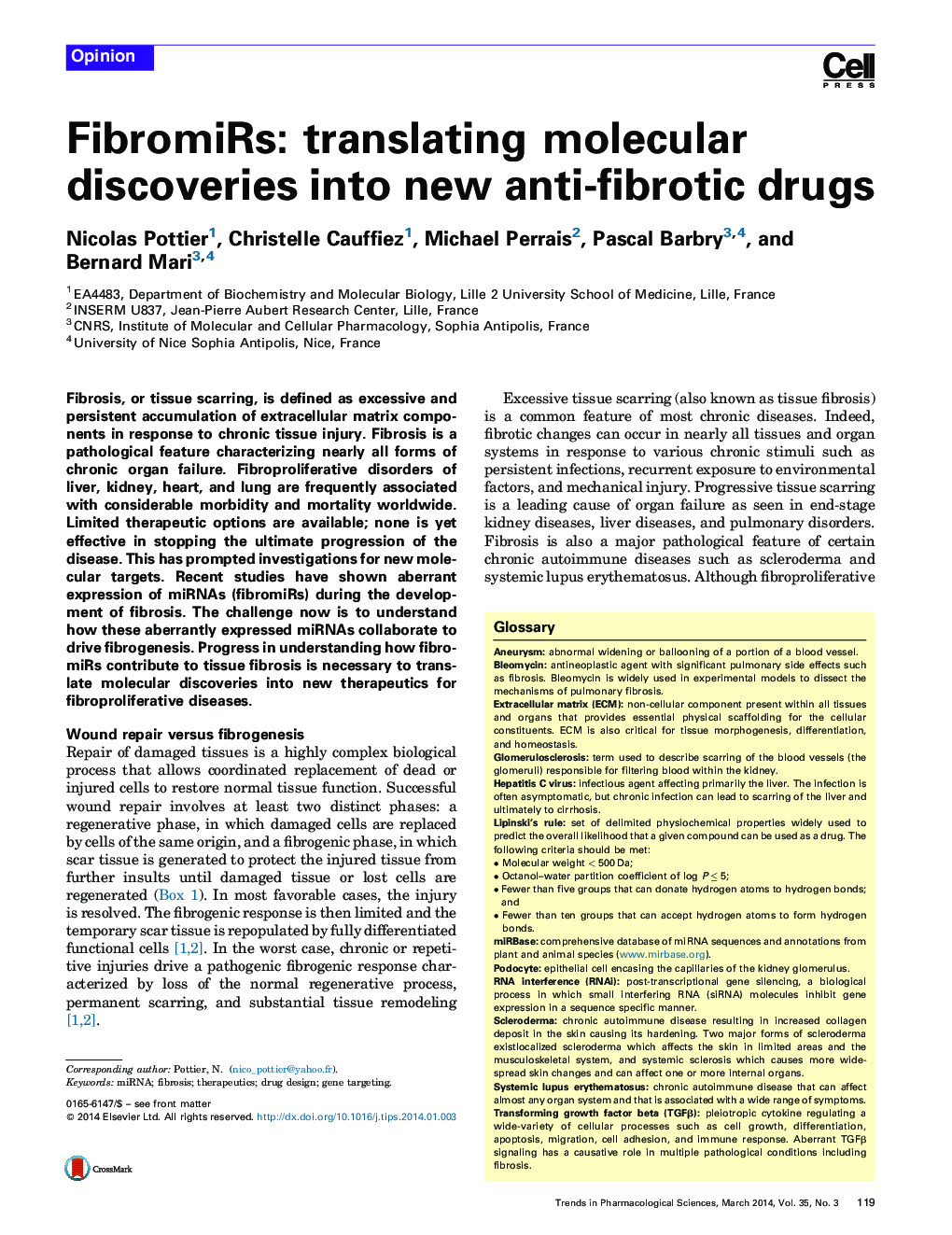| Article ID | Journal | Published Year | Pages | File Type |
|---|---|---|---|---|
| 2572584 | Trends in Pharmacological Sciences | 2014 | 8 Pages |
•Fibroproliferative diseases are a leading cause of morbidity and mortality worldwide.•Current anti-fibrotic drugs are minimally effective.•miRNAs have a critical role in the pathogenesis of fibrosis.•miRNAs are attractive targets for current and future anti-fibrotic drug development.
Fibrosis, or tissue scarring, is defined as excessive and persistent accumulation of extracellular matrix components in response to chronic tissue injury. Fibrosis is a pathological feature characterizing nearly all forms of chronic organ failure. Fibroproliferative disorders of liver, kidney, heart, and lung are frequently associated with considerable morbidity and mortality worldwide. Limited therapeutic options are available; none is yet effective in stopping the ultimate progression of the disease. This has prompted investigations for new molecular targets. Recent studies have shown aberrant expression of miRNAs (fibromiRs) during the development of fibrosis. The challenge now is to understand how these aberrantly expressed miRNAs collaborate to drive fibrogenesis. Progress in understanding how fibromiRs contribute to tissue fibrosis is necessary to translate molecular discoveries into new therapeutics for fibroproliferative diseases.
